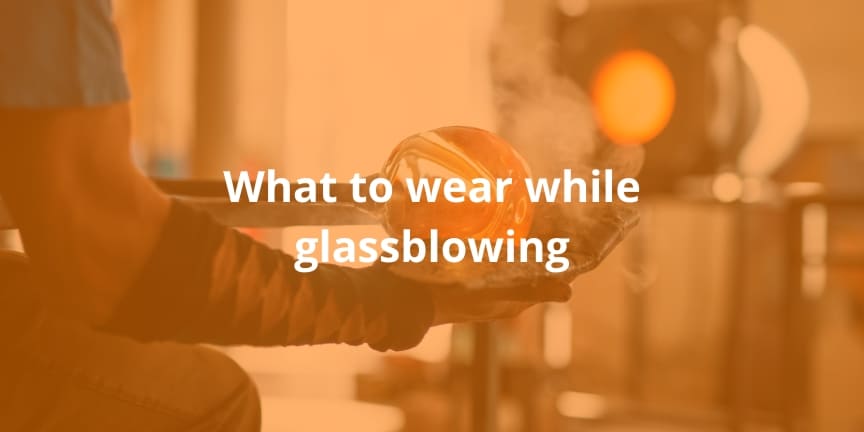Hello there! I’m Maggie, a specialist in the art of glassblowing. Today, I’m excited to share with you some essential tips on what to wear while practicing this incredible craft. Remember, safety and comfort are key in the glassblowing studio!
Glassblowing is not just an art; it’s a dance with elements. The furnace roars at scorching temperatures, molten glass radiates heat, and the studio buzzes with activity. In such an environment, your attire is your first line of defense. It should protect you from heat, accidental splashes, and any unforeseen mishaps.
Choosing the Right Materials and Clothing
First things first, always opt for natural fiber clothing like cotton. Synthetic materials can melt when exposed to high temperatures, which is a big no-no in glassblowing. A long-sleeved shirt and long pants are ideal to protect your skin from the heat and any accidental splashes of hot glass.
[amazon box=”B07NZVFDKD,B0B63PQ7CX,B09VR74Y3K,B000R7LZH8″ grid=”4″]
Next, let’s talk about footwear. Safety comes first, so closed-toe shoes are a must. They should be made of leather or another non-flammable material to protect your feet from any stray sparks or hot glass fragments. Absolutely no sandals or open shoes!
Don’t forget to shield your eyes with safety glasses. When you’re working with molten glass, it’s crucial to protect your eyes from not just flying fragments but also the intense brightness of the furnace. Some glassblowers prefer to use didymium glasses to reduce the glare and improve visibility.
Lastly, consider wearing a hat or bandana to keep your hair out of the way and to prevent any stray hairs from catching fire. A leather apron is also a good idea to protect your clothes and skin from heat and stray glass.
Remember, while glassblowing is an incredibly rewarding art form, safety should always come first. Dressing appropriately will ensure that you can enjoy your glassblowing experience to the fullest.
How to Safely Wear Shorts While Glassblowing
When glassblowing, it is important to wear appropriate clothing to protect yourself from burns and injuries. Shorts may be an appropriate choice if they are made of a flame-retardant material, such as 100% cotton, and are loose enough to allow for freedom of movement.
It is also important to wear long socks and closed-toe shoes, such as leather boots, to protect your feet from hot glass and molten materials. Additionally, it is important to wear protective eyewear and a face shield to protect your eyes and face from sparks and hot glass. Additionally, it is important to wear gloves to protect your hands from heat and sharp edges.
Risks of breathing in while blowing glass
The primary risks associated with breathing in while blowing glass are respiratory distress, including asthma, and other potential respiratory illnesses, due to the inhalation of high levels of dust, fumes, and other airborne particles released during the glassmaking process. Inhalation of these particles can cause irritation to the eyes, nose and throat, and can also cause damage to the lungs.
Additionally, inhalation of glass dust can lead to an increased risk of cancer. In order to reduce the risk of harm, it is important to always wear a protective mask while operating the glassblowing equipment and to keep the work area well-ventilated. Additionally, workers should ensure they are drinking plenty of water, as this can help keep the respiratory system from becoming dried out from all the dust and fumes present in the air. Finally, it is important to use all appropriate safety equipment and take breaks as needed.
[amazon box=”B08DQRXRCC”]
Why glassblowing without gloves is a common practice
Glass blowing without gloves is a common practice because it allows the glass blower to gain a better sense of touch. This sense of touch is needed to manipulate and shape the hot glass. The heat from the molten glass is too intense to wear gloves and can cause burns if the glass blower is not careful. Additionally, gloves can add extra bulk and make it difficult for the glass blower to hold and move the glass.
Glass blowing without gloves can be a dangerous practice, as the heat from the molten glass can cause severe burns if not handled correctly. To reduce the risk of injury, glass blowers often use tools such as tongs and tweezers to help hold and shape the hot glass. Additionally, protective clothing such as long sleeves, pants, and shoes are worn to reduce the risk of burns.


